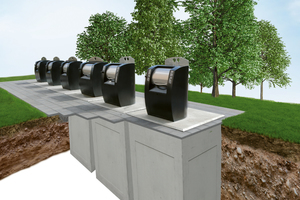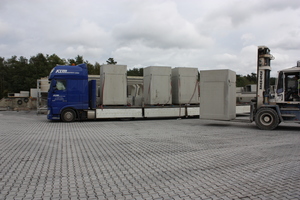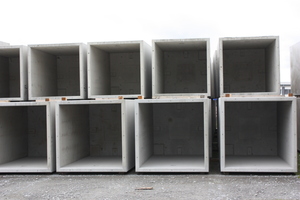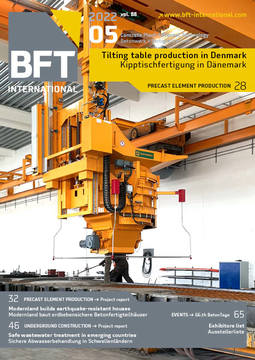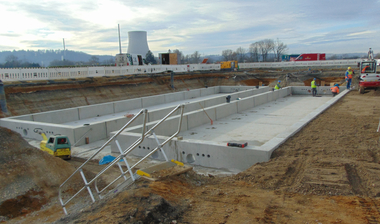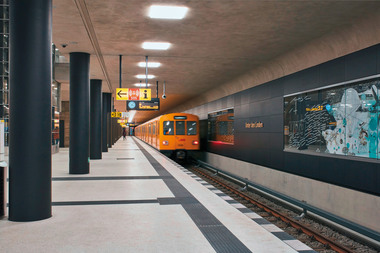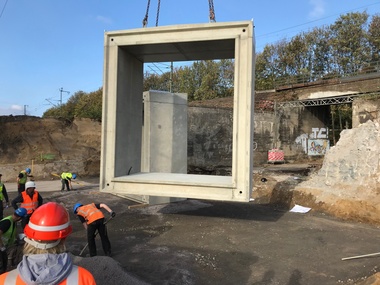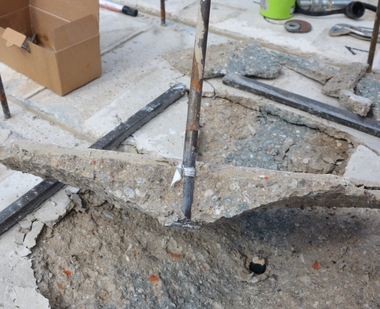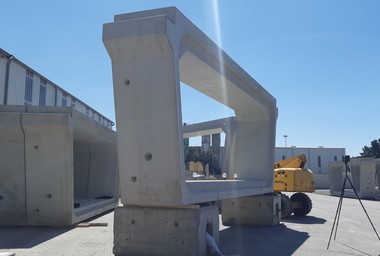Underground containers made of recycled concrete
An underground container is a bin installed below ground level with an aboveground opening for collecting waste or recyclable materials. It offers well-known advantages: underground containers require two-thirds less space than conventional containers, provide easy and therefore barrier-free access, offer increased fire protection, reduce unpleasant odors as well as annoying pest infestation, and impress with an attractive design. Precast producer Kleihues Betonbauteile produces underground containers in a particularly ecological process by using aggregates for concrete production that consist of a high percentage of recycled materials.
This kind of waste management is becoming increasingly popular not only in neighboring countries. In Germany, an increasing number of municipalities and owners of apartment buildings are also turning to this innovative collection system. Underground containers are especially efficient wherever space is in short supply. They offer numerous advantages for proper waste management.
High percentage of aggregates from recycled material
What could be more appropriate than to produce waste containers at least partially from waste materials? That is what precast producer Kleihues had in mind when developing the precast concrete elements forming the underground component of these containers, which have a capacity of approx. 3 to 5 m³. It led the company to also use aggregates from recycled concrete in the production of the underground collection systems. The material originates from the demolition of road pavements and concrete structures, and from residual concrete generated at the plant. The percentage added is dependent on the regulations in effect in the country of destination. The use of secondary raw materials thus contributes to resource efficiency in the construction industry while at the same time reducing environmental impacts.
Use of low-carbon blast-furnace cement
But can concrete be truly sustainable? In addition to the use of recycled aggregates, the manufacturer is increasingly relying on low-carbon blast-furnace cement (CEM II) in its production processes. Managing Director Paul-Martin Großkopff says: “Compared to pure Portland cement, which is the standard cement used in precast concrete plants, a large portion of the energy-intensive clinker is replaced by granulated blast-furnace slag when using blast-furnace cement. As a result, we require significantly less primary energy and reduce carbon emissions.”
Optimized structural stability – optimized transport
But what about the structural stability of these components? Can the containers installed below ground level withstand the loads acting from above? “Special analysis programs have allowed us to optimize the structural stability of our underground collection bins so that the usual loads do not pose a problem,” explains Großkopff. “This has resulted in reduced wall thicknesses while at the same time guaranteeing impermeability to water.” There is also no problem with logistics even though the individual components weigh between 3.5 and 5 t. “We design stable concrete elements to ensure safe transport on the transport vehicles,” says Großkopff. “The dimensions have been designed so that the available transport space can generally be fully utilized. This also reduces emissions as well as the burden on roads.”
CONTACT
Kleihues Betonbauteile
GmbH & Co. KG
Siemensstr. 21
48488 Emsbüren/Germany
+49 5903 9303-0

